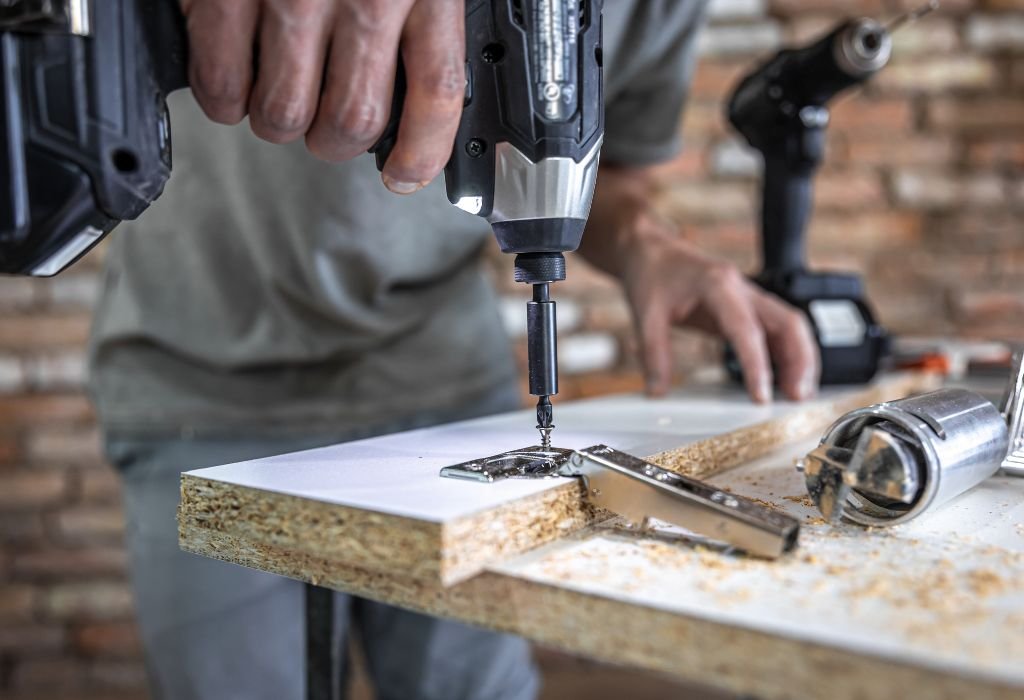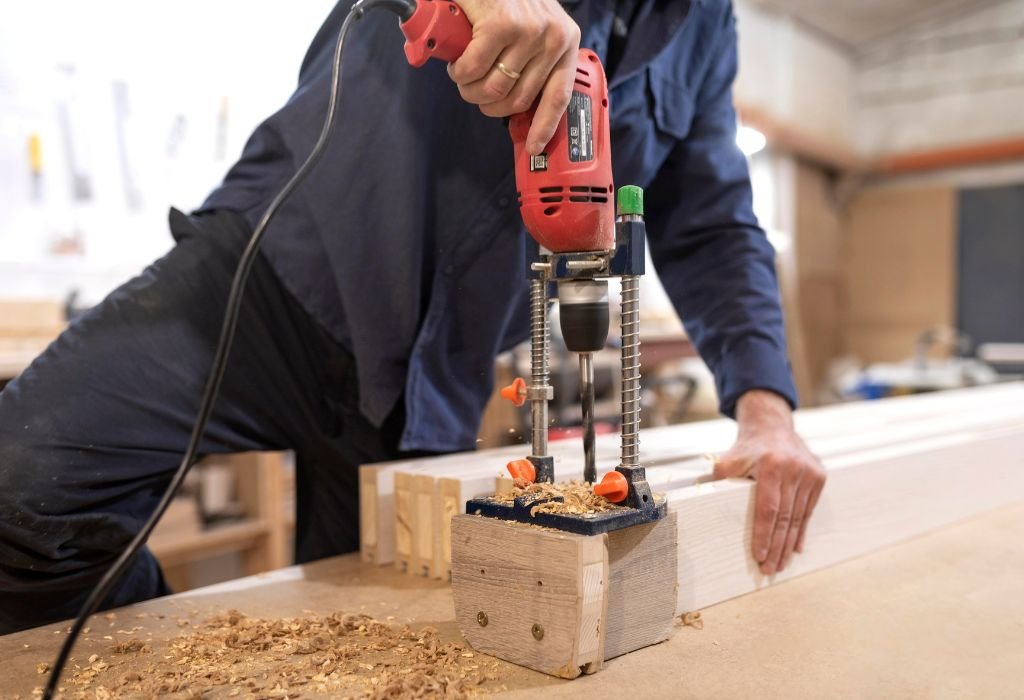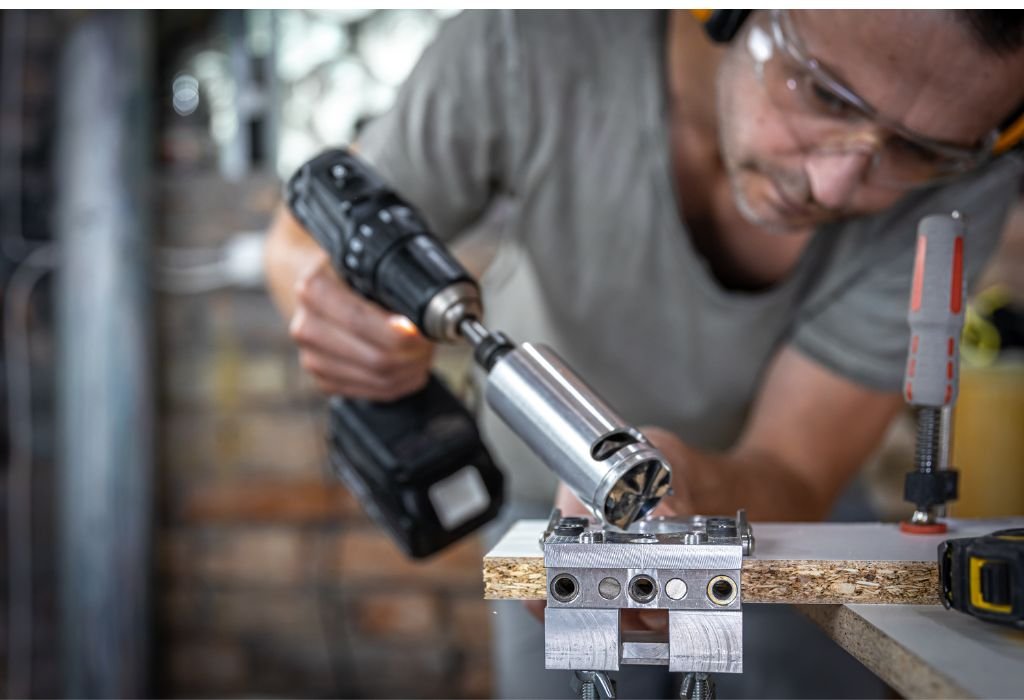Every year, millions of travelers board flights with items that are not just clothes and personal electronics. According to the Transportation Security Administration (TSA), more than 2.5 million passengers pass through U.S. airports every single day, and many of them attempt to carry tools, sports gear, and equipment. Among these items, power tools like cordless drills often cause confusion. The most common question is simple but important: can you bring a cordless drill on a plane?
At first, it may seem unusual to carry a drill while flying, but many people have practical reasons. Contractors may need their drills for work projects. DIY enthusiasts might be moving homes. Even travelers relocating for jobs may want to bring their trusted tools instead of buying new ones. However, airlines and security agencies treat power tools differently from regular items because of safety concerns. Lithium-ion batteries that power cordless drills are particularly sensitive, and the drills themselves can be seen as potential hazards.
This article explores the TSA rules, FAA guidelines, and airline policies you need to know before traveling with a cordless drill. We will also cover international restrictions, packing tips, real-life traveler scenarios, and a detailed FAQ section to clear up confusion. By the end, you will know exactly how to pack and travel with your drill without any problems at the airport.
1. TSA Guidelines on Cordless Drills

The TSA is responsible for screening passengers and luggage in the United States. Their official rules about tools and power equipment are very clear:
- Power tools longer than 7 inches are not allowed in carry-on luggage.
- Cordless drills must be placed in checked baggage, not in the cabin.
- Lithium-ion batteries must always be removed and packed separately in carry-on bags.
The reason behind these restrictions is safety. A drill can be used as a blunt object, and in extreme cases, as a weapon. Allowing drills in the cabin could put passengers at risk. That is why TSA officers are instructed to remove drills from carry-on bags during security checks.
The second reason is battery safety. Lithium-ion batteries can overheat or catch fire if damaged. Incidents involving battery fires have already been reported on flights worldwide, so the TSA applies strict limits on how batteries are transported.
2. Carry-On Luggage Rules for Cordless Drills
Many travelers wonder if they can keep their drill in their backpack or small suitcase to save time. Unfortunately, this is not possible. TSA officers almost always reject drills in carry-on luggage. Even compact cordless drills are restricted because they can be considered dangerous.
The TSA website also highlights that sharp tools and heavy objects that could be used to cause harm are not allowed in the cabin. A cordless drill, with or without drill bits, falls under this category.
Some accessories, however, may be allowed in carry-on bags:
- Drill bits shorter than 7 inches may pass through security, but longer ones are restricted.
- Small screwdriver bits or hex bits often pass inspection if packed separately.
- Batteries can be carried in hand luggage, but only under the watt-hour limits set by the FAA.
Even with these small allowances, the safest approach is to avoid putting your drill in carry-on luggage altogether.
3. Cordless Drill in Checked Luggage
Checked luggage is the correct way to transport a cordless drill when flying. Airlines and TSA both allow drills in checked baggage as long as batteries are removed. Here is how to prepare:
- Remove the battery before packing the drill.
- Place the drill in a padded case or wrap it in clothes for protection.
- Ensure the switch is locked in the off position.
- Pack drill bits or accessories in protective cases to prevent injury to baggage handlers.
If you forget to remove the battery, TSA officers may either confiscate it or prevent your luggage from being loaded. Always double-check before sealing your bag.
4. Lithium Battery Rules and FAA Guidelines
Lithium-ion batteries are the most sensitive part of traveling with cordless drills. The Federal Aviation Administration (FAA) enforces international standards for air safety. Their rules are:
- Batteries up to 100 watt-hours (Wh) are allowed in carry-on bags without special approval.
- Batteries between 100 and 160 Wh may be carried with airline approval, usually limited to two per passenger.
- Batteries above 160 Wh are banned from passenger aircraft.
Most cordless drill batteries fall in the 18V to 20V range and usually measure between 40 and 80 Wh. This means they are safe for carry-on under normal conditions. However, they must be packed properly:
- Terminals should be covered with tape or protective caps.
- Batteries should be placed in a plastic case or original packaging.
- Never carry damaged or swollen batteries, as these will be confiscated.
If you are carrying multiple batteries, limit them to two spares unless your airline specifies otherwise.
5. Airline-Specific Policies

Although TSA and FAA provide the main guidelines, airlines often have their own rules. Here are examples:
- American Airlines allows cordless drills in checked luggage but requires batteries in hand luggage.
- Delta Airlines follows TSA standards but recommends passengers inform staff about spare batteries.
- United Airlines restricts power tools from carry-ons but permits them in checked bags.
- British Airways follows IATA rules, requiring all spare lithium batteries in carry-on luggage.
- Emirates and Singapore Airlines both allow drills in checked baggage but may require advance notice if carrying multiple batteries.
Always check your airline’s website before flying because policies can change quickly.
6. International Travel Considerations
Traveling outside the United States adds another layer of complexity. Many international airports follow International Civil Aviation Organization (ICAO) standards, which mirror FAA guidelines. However, customs laws vary:
- In the European Union, most airlines allow drills in checked baggage with batteries removed.
- In Australia, airlines are particularly strict about lithium battery storage and may request inspection at the gate.
- In some Middle Eastern countries, additional inspection is required for tools in luggage.
It is always best to print TSA or IATA guidelines and carry them with you. This helps if an airline officer is unsure about the rules.
7. Packing Tips for Cordless Drills
Packing your drill properly can save time and reduce the risk of damage. Follow these steps:
- Remove the battery and place it in your carry-on bag.
- Use a padded case or hard-shell tool box for the drill.
- Wrap drill bits in cloth or bubble wrap to avoid injury.
- Keep your checked luggage under the airline’s weight limits to avoid fees.
- If carrying multiple tools, label your bag for easy TSA inspection.
Affiliate suggestion: You can buy TSA-approved tool cases and battery organizers on Amazon that are designed for safe air travel.
8. Alternative Options Instead of Flying with a Drill
Sometimes it may not be worth the stress to bring your drill on a plane. Consider these alternatives:
- Shipping your tools via FedEx, UPS, or DHL to your destination in advance.
- Renting cordless drills at your location from hardware stores.
- Purchasing a new drill at your destination and keeping your main toolset at home.
For frequent travelers, shipping tools or using rental services often saves both time and money.
9. Real Traveler Scenarios

Let us look at some examples of how different travelers handle drills:
- A contractor flying from New York to Chicago removes the battery, packs the drill in a padded case, and carries batteries in his backpack. He clears TSA without delay.
- A student moving abroad tries to pack both the drill and battery in checked luggage. TSA flags the bag, removes the battery, and delays the flight.
- An international traveler heading to Europe ships tools by courier in advance and only carries spare batteries in hand luggage. This method avoids airline restrictions completely.
These scenarios show how preparation can prevent stress and delays.
10. FAQs About Cordless Drills on Planes
Can I bring drill bits in carry-on luggage?
Yes, but only if they are shorter than 7 inches. Longer bits must be checked.
What about other power tools like impact drivers or saws?
These must be placed in checked luggage with batteries removed.
Can TSA confiscate my drill?
Yes. TSA officers always have the final decision. If they believe your tool is unsafe, they can remove it.
Can I bring multiple batteries?
Usually yes, but only up to two spares in carry-on luggage unless approved by the airline.
What if my battery is swollen or damaged?
Damaged batteries are never allowed on planes. Dispose of them properly before traveling.
Do airlines outside the U.S. follow the same rules?
Most international carriers follow IATA guidelines, which are very similar to TSA and FAA standards.
Can I bring a drill press or larger power tool?
No. Large stationary tools are not practical for air travel and may be refused.
Do I need to notify the airline in advance?
Some international carriers request notification if carrying multiple lithium batteries. Check with your airline.
11. Final Checklist Before Flying
Before heading to the airport, review this quick checklist:
- Drill packed in checked luggage.
- Battery removed and stored in carry-on.
- Battery terminals covered with tape or caps.
- Drill bits packed safely in protective cases.
- Airline policy reviewed before travel.
- Spare batteries limited to two unless airline approval is given.
Conclusion
So, can you bring a cordless drill on a plane? The answer is yes, but only if you follow the right rules. The drill itself must always be packed in checked luggage. The lithium-ion battery that powers it must be removed and carried in your hand luggage with protective covers. Airline policies can differ slightly, but TSA and FAA rules are very consistent.
By preparing in advance, using a proper tool case, and following packing guidelines, you can bring your cordless drill without any stress. If traveling internationally, always check with your airline and consider alternatives such as shipping or renting.
With careful planning, there is no reason to leave your cordless drill behind when flying.

I’m John F. Nicholas, the founder, lead writer, and drill enthusiast behind 101drill.com. With years of hands-on experience in power tools and DIY projects, I created this platform to share practical knowledge, expert tips, and real-world insights to help others master the art of drilling.
